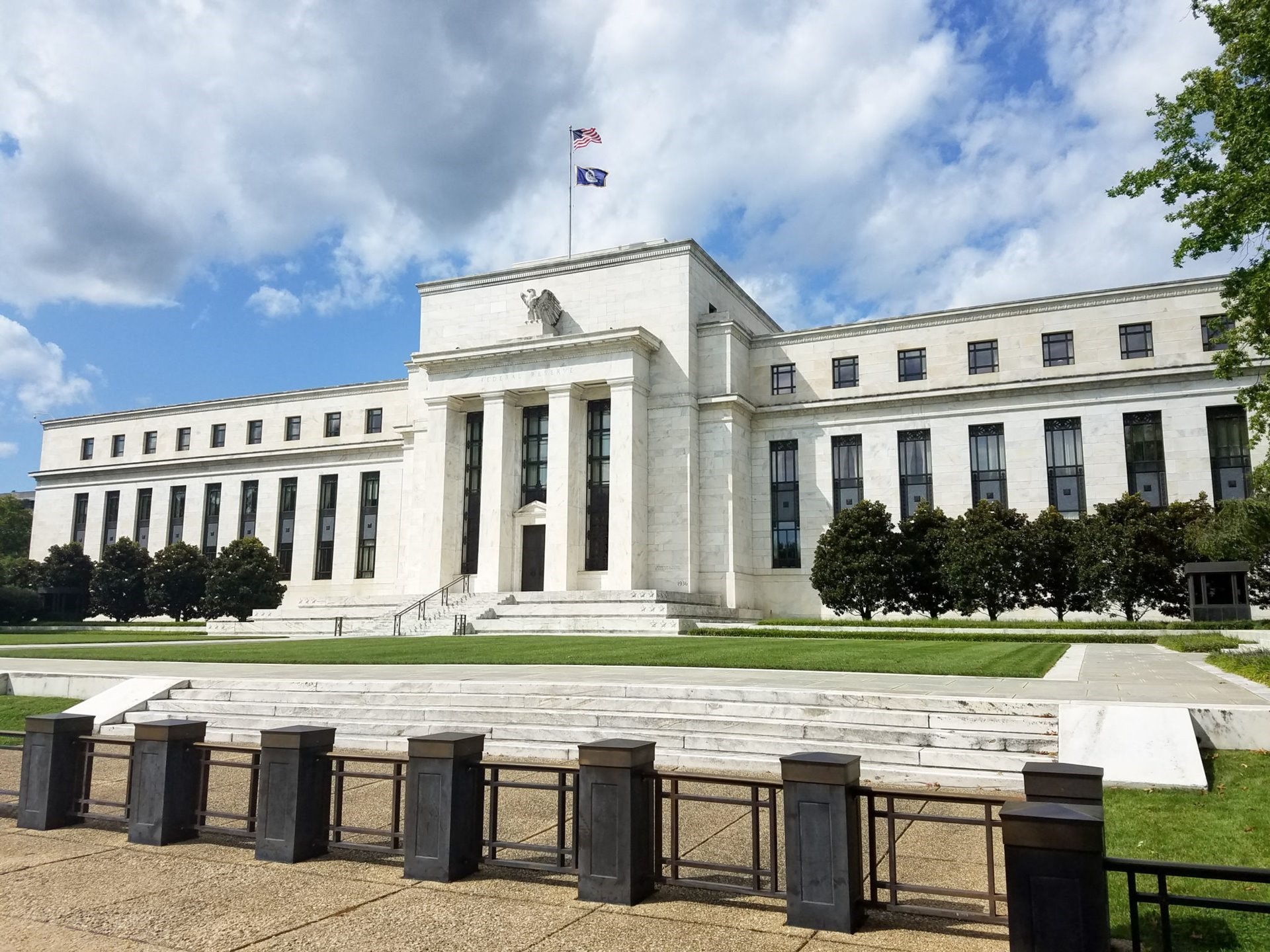Fed’s rate cut countered by Trump
The Federal Reserve's decision to ease the federal funds rate set off a domino effect this week as stocks and bonds hedged their bets that the Fed made the wrong move. And then, President Trump shook everything up even more.
This started on Wednesday when, for the first time since 2008, the Federal Reserve Open Market Committee members decided to lower the federal funds rate. They noted that the quarter of a point decrease was due to a lack of inflationary pressure along with soft fixed-business investments and global economic developments.

The language the Fed used, specifically Jerome Powell, indicated this might be the only rate cut this year. Fed Chair Jerome Powell called this cut a "midcycle adjustment" and was adamant that his organization would never cut rates in the face of political pressure. That was a direct response to President Trump's comments on the Fed, saying "a small rate cut is not enough."
On Thursday, investors in both stocks and bonds were betting that the Fed made a mistake in the quarter point reduction and should have made a larger cut. The benchmark 10-year Treasury started falling, hitting 1.861% early Friday, which is a nearly three-year low. Meanwhile, stocks jumped up sharply in response. Essentially, everyone believes that the Fed will be forced to cut rates again this year.
Later in the day Thursday, a bombshell from President Trump as he announced the United States will institute a 10% tariff on $300 million worth of Chinese goods starting September 1. That is in addition to the 25% tariff already in place on $250 million worth of Chinese goods. This was a shock as the U.S. and China had resumed trade talks this week in Shanghai.
As reported by Reuters, China responded, saying that it would be forced to take countermeasures if the United States followed through with the additional tariffs. China's spokesperson at the foreign ministry, Hua Chunying, said in a press conference that China does not want a trade war with the U.S. but added it's not afraid of fighting one.
The Dow Jones Industrial Average plummeted on the news, erasing the 300 point gain it had seen earlier in the day. Friday's futures numbers were also down. President Trump is scheduled to make another announcement Friday afternoon about trade with the European Union.
The oil industry is what took the one-two punch this week. After already falling on Wednesday after the Fed's rate cut announcement, oil prices dropped again in response to Trump's tweet about tariffs. The international benchmark for oil, Brent crude, dropped by 6%. That was its worst day since February of 2016.
Government data reports

The U.S. labor force is holding strong according to the latest jobs report from the Labor Department. Friday's report showed that payrolls increased by 164,000 with the unemployment rate holding at 3.7%. Wages are on the rise as well, showing a 3.2% year-over-year gain which was just above expectations.
The "real" jobs report, which takes into consideration people who are discouraged workers or underemployed, dropped to 7%. That is its lowest level in nearly two decades.
There were more revisions to previous month's reports, as June's jobs numbers went down under 200,000 and May's paltry 72,000 was revised even further to 62,000. However, this report shows that companies are continuing to hire despite fears of an economic slowdown.
The private payroll report from ADP showed that jobs increased by 156,000, which was better than expected. These numbers from both the Labor Department and ADP show that the economy is still going strong, but it is a significant departure from the numbers we saw just a year ago which were topping the 200,000 mark consistently.
June's numbers show a moderate rise in consumer spending and consumer prices, according to the Commerce Department. Consumer spending accounts for two-thirds of the United States economy and these numbers are closely monitored by groups like the Fed to judge economic health. June's consumer spending went up by 0.3% with fewer people purchasing cars but increasing spending on services. May's numbers were revised up to 0.5%.
Meanwhile, consumer prices, measured by the personal consumption expenditure index (PCE) went up by 0.1% in June. Those numbers showed decreases in the prices of food and energy. The core PCE, which excludes the more volatile food and energy costs, rose month-over-month, but it's the year-over-year average that tells the bigger story. In the last year, the core PCE has only gone up by 1.6%. That's a very moderate increase that once again indicates sluggishness in inflation.
Consumer confidence, on the other hand, is booming. After faltering in June, July's consumer confidence jumped back up to its highest level since November 2018. The Conference Board issues its report each month and this month showed a more than 11 point increase in July over June's number. That's a much stronger rebound than many economists had expected.
Mortgage applications down, Refi remains king

Supply is once again hampering home purchases, according to Joel Kan, the Mortgage Bankers Association Vice President of Economic and Industry Forecasting. According to the MBA's data, mortgage applications fell by 1.4% week-over-week. In contrast, the Refinance Index moved up again and is 84% higher than it was a year ago at this time.
"While purchase activity was still up 6% from a year ago, the index has now decreased for three straight weeks and reached its lowest point since March. Despite healthy demand, inadequate supply levels continue to hold back some would-be buyers," Kan said. "Rate movements were mixed, with the 30-year fixed rate remaining unchanged (at 4.08%) but the FHA rate decreasing to its lowest level since 2017 to 3.94%."
This backs up the forecast released earlier this week by Freddie Mac, in which the group predicted the low mortgage rates and strong job market would help sustain the housing industry through 2020. This week, mortgage rates held steady at 3.75% for the 30-year fixed-rate mortgage average.
However, keep an eye on the Consumer Financial Protection Bureau as it seeks to eventually eliminate a loophole (referred to as a patch) that has allowed Freddie Mac and Fannie Mae to purchase home loans for people with a debt-to-income ratio higher than 43%.
CFPB Director Kathleen Kraninger said in a statement, “Readjusting away from the patch can facilitate a more transparent, level playing field that ultimately benefits consumers through stronger consumer protection.”
Another wrinkle in the government-backed loans sector is the Department of Housing and Urban Development deciding to lower its loan-to-value requirements from 85% to 80% on cash-out refinances. This is in an effort to reduce the number of cash-out refinances happening for FHA-backed loans. That change goes into effect Sept. 1. This is the first time in a decade that HUD has changed the LTV requirements on cash-out refis. It's an effort to preserve the value of
Home prices continue to cool
Home prices are still rising nationally but continue to cool overall. May's S&P CoreLogic Case-Shiller home price Index showed that home prices rose by 3.4% in that month, down from a 3.5% increase in April. The most interesting city in the study was Seattle, Washington. "Seattle's home price index is now 1.2% lower than it was in May 2018, the first negative [year-over-year] change recorded in a major city in a number of years," said Philip Murphy, managing director and global head of index governance at S&P Dow Jones Indices. "On the other hand, Las Vegas and Phoenix, while cooler than they were during 2018, remain quite strong."


